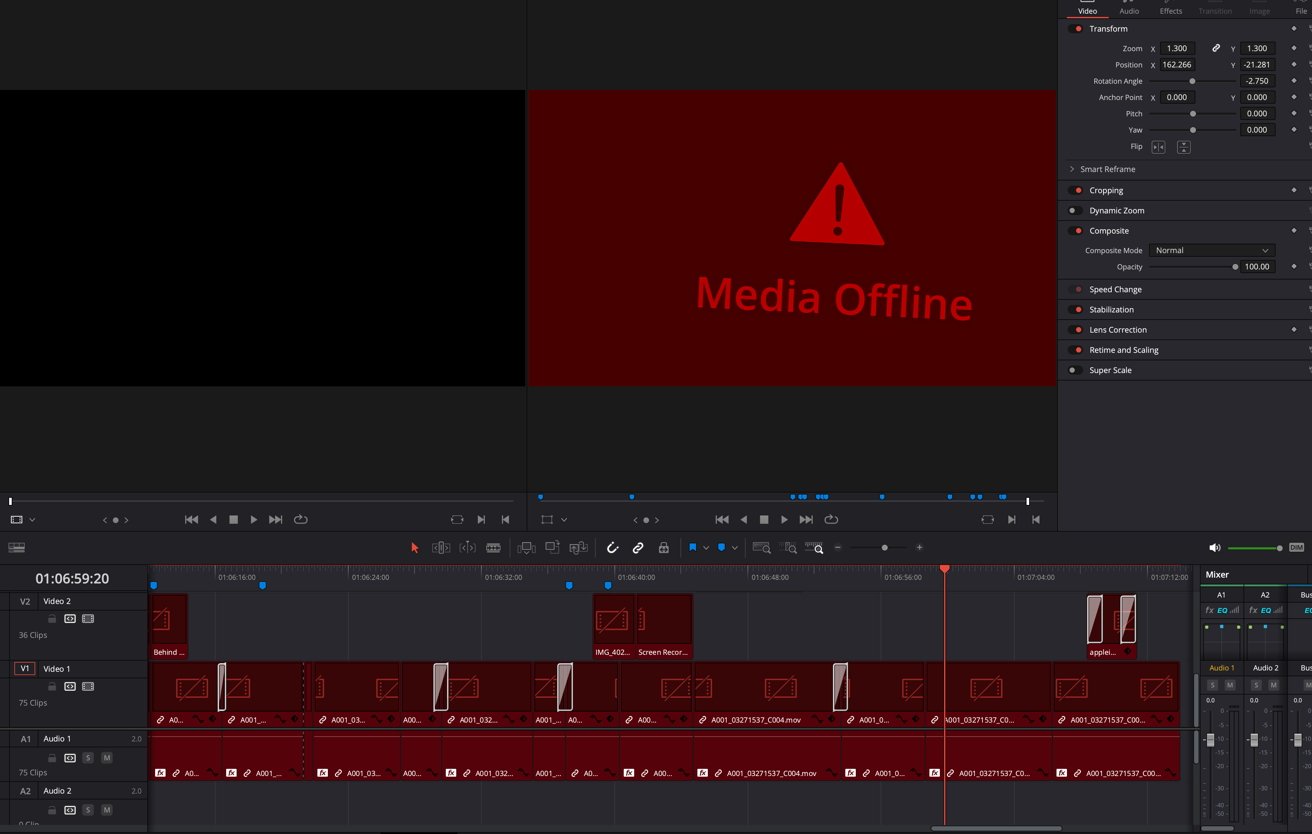Go Here to Read this Fast! New Android 15 feature could turn your smartphone into a desktop computer
Originally appeared here:
New Android 15 feature could turn your smartphone into a desktop computer
Go Here to Read this Fast! New Android 15 feature could turn your smartphone into a desktop computer
Originally appeared here:
New Android 15 feature could turn your smartphone into a desktop computer
ETH’s captured value remained high in Q2.
A few metrics hinted at a possible bull rally in coming days.
The first quarter of 2024 witnessed much volatility in the market, as top coins like
The post Ethereum registers 3x gains in Q1: What does Q2 hold? appeared first on AMBCrypto.
Go here to Read this Fast! Ethereum registers 3x gains in Q1: What does Q2 hold?
Originally appeared here:
Ethereum registers 3x gains in Q1: What does Q2 hold?
The Litecoin/Tether chart was completely different to the Litecoin/Bitcoin chart
Investors would be debating whether LTC could catch up to BTC’s performance this year
Litecoin [LTC] performe
The post Is Litecoin back after Bitcoin’s recent rally? The answer is… appeared first on AMBCrypto.



It’s not uncommon for a complex project to end up with offline clips during editing. A video editing program doesn’t touch the original footage during editing. Programs like Resolve use a file to track changes instead of modifying the original clip, and that file can lose track of where original media lives.
Media Offline simply indicates that the editing program has lost the path to an original file. This is often caused by moving or renaming clips in the Finder, but sometimes, media can go offline for no apparent reason.
Go Here to Read this Fast! How to fix corrupted DaVinci Resolve projects
Originally appeared here:
How to fix corrupted DaVinci Resolve projects
Interest in memecoins surged, however, DOGE’s price continued to decline.
Number of DOGE holders continued to increase as profitability remained the same.
The bull run that kicked off at the
The post Dogecoin: Why DOGE prices are dropping despite memecoin mania appeared first on AMBCrypto.
Go here to Read this Fast! Dogecoin: Why DOGE prices are dropping despite memecoin mania
Originally appeared here:
Dogecoin: Why DOGE prices are dropping despite memecoin mania
Crypto venture capital (VC) investments increased in the first quarter of 2024, according to a survey published by Crypto Koryo on April 4. The analyst measured growth across two distinct metrics. VCs invested nearly $2 billion in crypto projects, marking an increase of 38% from Q4 2023. VCs also invested in 250 crypto projects, representing […]
The post Crypto VC investments increased 38% in first quarter breaking 2 year trend appeared first on CryptoSlate.
Originally appeared here:
Crypto VC investments increased 38% in first quarter breaking 2 year trend
Lido also shared an updated guide to help users with a smooth withdrawal process.
Solana liquid staking remains largely untapped, with just $3.7 billion in deposits.
In what could be a sign
The post How Lido solved Solana’s $24 million problem appeared first on AMBCrypto.
XRP has declined by close to 8% in the last seven days.
OI shows positive moves from buyers.
Ripple’s XRP was not able to kick off the month with significant momentum, as suggested by an ana
The post XRP price prediction – Time to sell or buy after 8% drop? appeared first on AMBCrypto.
Go here to Read this Fast! XRP price prediction – Time to sell or buy after 8% drop?
Originally appeared here:
XRP price prediction – Time to sell or buy after 8% drop?
Learn how you can improve your graphs for machine-learning tasks.
Originally appeared here:
How to Improve Graphs to Empower Your Machine-Learning Model’s Performance

In this guide, you will learn how to package a simple TypeScript React Application into a Python package and serve it from your FastAPI Python web server. Check out the client and the server repos, if you want to see the full code. Let’s get started!
During the development process, you probably use two different IDEs:
In other words, you have two different servers running locally. Whenever you want to call your FastAPI server, the browser interacts with two different servers.

While it works fine locally (in localhost), you’ll encounter a “Cross-Origin Request Blocked” error in your browser when you deploy that code. Before taking your code to production, the best practice is to serve both client pages and REST API from the same backend web server. That way the browser will interact with a single backend. It’s better for security, performance, and simplicity.

First, in your workspace directory, let’s create a new TypeScript React application using vite:
~/workspace ➜ npm create vite@latest
✔ Project name: … vite-project
✔ Select a framework: › React
✔ Select a variant: › TypeScript
Then, enter into the new project directory, install the dependencies, and run the application (http://localhost:5173):
~/workspace ➜ cd vite-project
~/workspace/vite-project ➜ npm install
~/workspace/vite-project ➜ npm run dev
You should see something like:

Now, let’s make a small addition to the template — we’ll add an async HTTP call to the future FastAPI backend to get its status:
function App() {
...
const [health, setHealth] = useState('');
useEffect(() => {
const getStatus = async () => {
const response = await fetch('/v1/health-check/liveness', {
method: 'GET',
});
let status: { [status: string]: string } = {};
try {
status = await response.json();
} catch (err) {
console.log(`failed to get backend status. ${err}`);
}
setHealth(status['status'] || 'unknown');
};
getStatus();
}, []);
return (
...
<div>Backend Status: {health}</div>
...
)
}
And now we should get something like this:

At this point, the Backend Status is unknown because we haven’t implemented it yet. No worries, we will handle that shortly. Lastly, let’s build the client for packaging it later on:
~/workspace/vite-project ➜ npm run build
The build output should create a dist folder with the final optimized code that looks like this:
└── dist/
├── assets/
├── static/
└── index.html
At this point, we are switching to Python. I prefer to work in a virtual environment for isolation. In a dedicated virtual environment, we will install twine and build , for creating our Python package:
~/workspace/vite-project ➜ python3 -m venv venv
~/workspace/vite-project ➜ . venv/bin/activate
~/workspace/vite-project (venv) ➜ python -m pip install --upgrade pip
~/workspace/vite-project (venv) ➜ pip install twine==5.0.0 build==1.2.1
Let’s create a new setup.py file in the root folder (vite-project), with the following content:
from setuptools import setup
from pathlib import Path
cwd = Path(__file__).parent
long_description = (cwd / "README.md").read_text()
setup(
name="vite-project",
version="0.0.1",
package_dir={"vite_project": "dist"},
package_data={"vite_project": ["**/*.*"]},
long_description=long_description,
long_description_content_type="text/markdown",
)
and run the following to create the package:
~/workspace/vite-project (venv) ➜ python setup.py sdist -d tmp
~/workspace/vite-project (venv) ➜ python -m build --wheel --outdir tmp
~/workspace/vite-project (venv) ➜ twine upload -u ${USERNAME} -p ${PASSWORD} --repository-url ${REPO_URL} tmp/*
The last line above is optional if you intend to upload your package to a remote repository such as PyPI, JFrog Artifactory, etc.
The final step is to build the Python server and use the client package. For that, we will:
~/workspace/backend ➜ python3 -m venv venv
~/workspace/backend ➜ . venv/bin/activate
~/workspace/backend (venv) ➜ python -m pip install --upgrade pip
~/workspace/backend (venv) ➜ pip install fastapi==0.110.0 uvicorn==0.29.0
~/workspace/backend (venv) ➜ pip install ~/workspace/vite-project/tmp/vite-project-0.0.1.tar.gz
Note that we installed our client package from a local path that we created earlier. If you uploaded your package to a remote repository, you can install it with:
~/workspace/backend (venv) ➜ pip install --extra-index-url https://${USERNAME}:${PASSWORD}@${REPO_URL} vite-project==0.0.1
Next, let’s create a simple Python server (2 files):
from distutils.sysconfig import get_python_lib
from fastapi import FastAPI
from fastapi.responses import FileResponse
from fastapi.staticfiles import StaticFiles
from backend.health_router import router
from uvicorn import run
def create_app():
app = FastAPI(
title="Backend Server",
)
app.include_router(router)
client_path = f"{get_python_lib()}/vite_project"
app.mount("/assets", StaticFiles(directory=f"{client_path}/assets"), name="assets")
app.mount("/static", StaticFiles(directory=f"{client_path}/static"), name="static")
@app.get("/{catchall:path}")
async def serve_react_app(catchall: str):
return FileResponse(f"{client_path}/index.html")
return app
def main():
app = create_app()
run(app, host="0.0.0.0", port=8080)
if __name__ == "__main__":
main()
from typing import Literal
from typing_extensions import TypedDict
from fastapi import APIRouter, status
STATUS = Literal["success", "error", "partial", "unknown"]
class ReturnHealthcheckStruct(TypedDict):
status: STATUS
router = APIRouter(
prefix="/v1/health-check",
tags=["Health Check"],
)
@router.get(
"/liveness",
summary="Perform a Liveness Health Check",
response_description="Return HTTP Status Code 200 (OK)",
status_code=status.HTTP_200_OK,
response_model=ReturnHealthcheckStruct,
)
async def liveness() -> ReturnHealthcheckStruct:
return {"status": "success"}
In the implementation above, we added support for serving any static file from our client application by mounting the static and assets folders, as well as any other client file to be served by our Python server.
We also created a simple GET endpoint, v1/health-check/liveness that returns a simple {“status”: “success”} JSON response. That way we can ensure that our server handles both client static files and our server-side RESTful API.
Now, if we go to localhost:8080 we can see our client up and running. Pay attention to the Backend Status below, it’s now success (rather than unknown).

In this tutorial, we created a simple React Application that does a single call to the backend. We wrapped this client application as a Python package and served it from our FastAPI Python web server.
Using this approach allows you to leverage the best tools in both worlds: TypeScript and React for the frontend, and Python with FastAPI for the backend. Yet, we want to keep high cohesion and low coupling between those two components. That way, you will get all the benefits:
Packaging Your TypeScript Client into a Python Backend was originally published in Towards Data Science on Medium, where people are continuing the conversation by highlighting and responding to this story.
Originally appeared here:
Packaging Your TypeScript Client into a Python Backend
Go Here to Read this Fast! Packaging Your TypeScript Client into a Python Backend